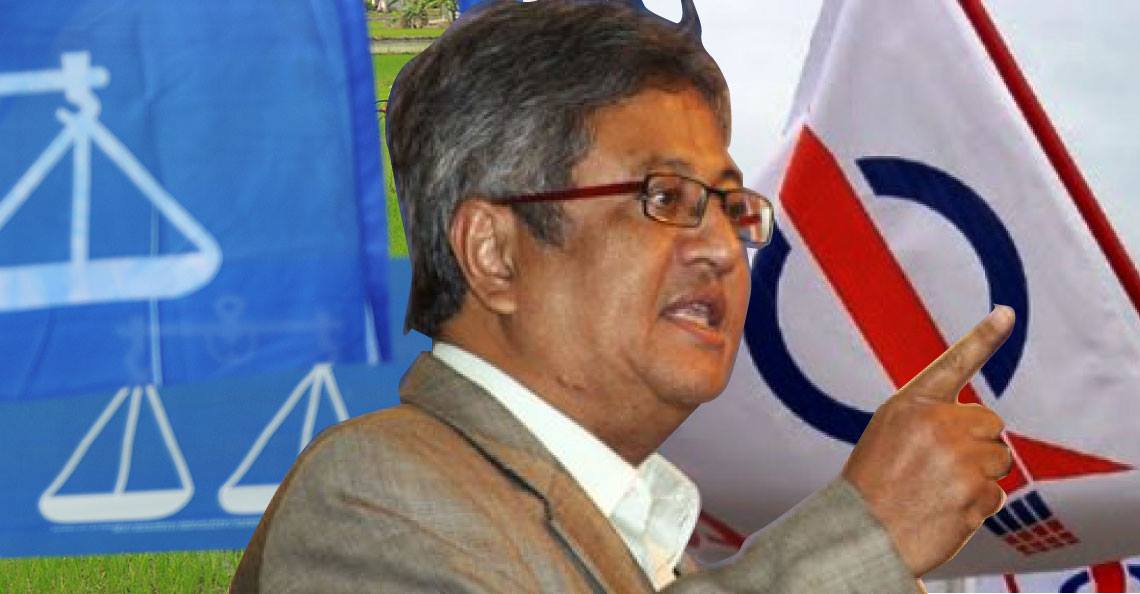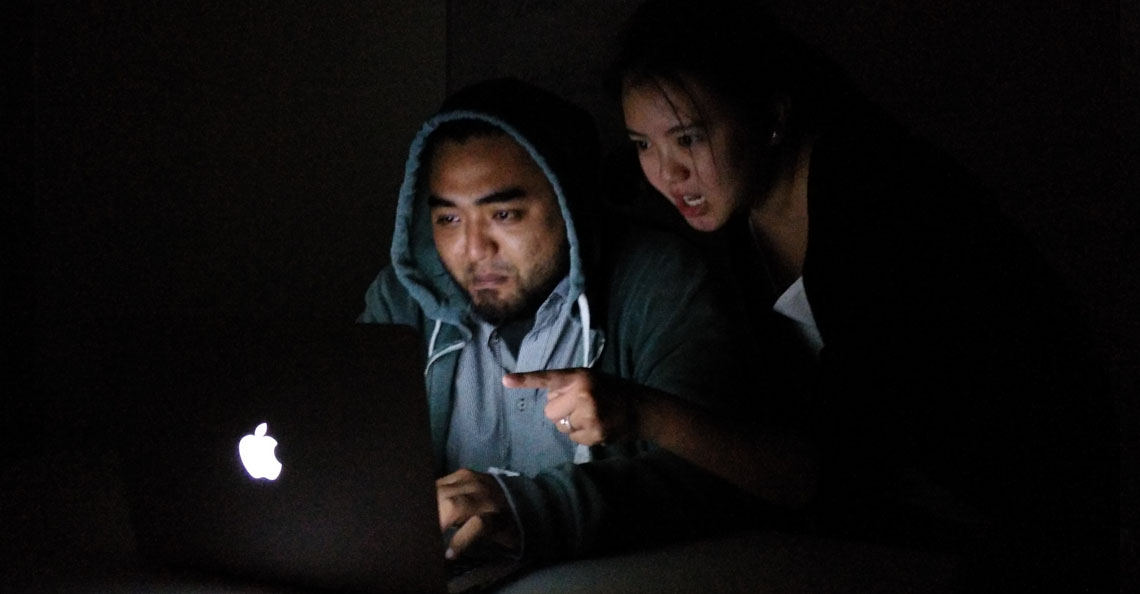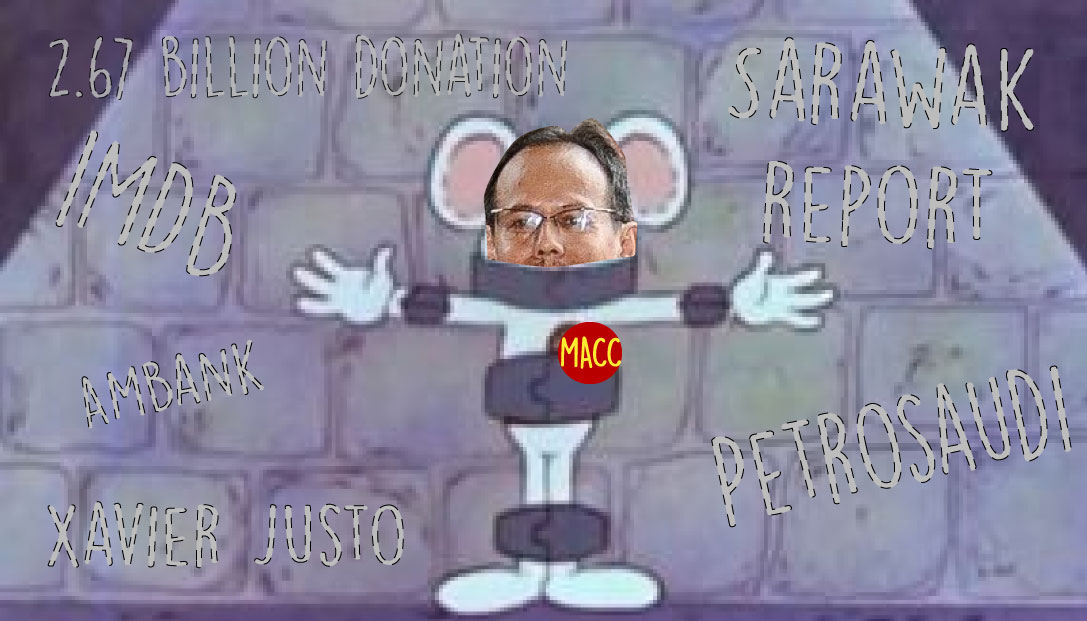The shady origins of DAP’s Red Bean Army cybertroopers
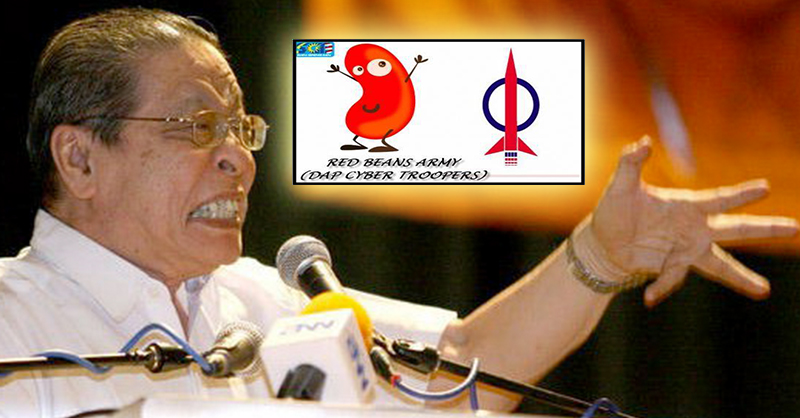
- 158Shares
- Facebook130
- Twitter7
- LinkedIn5
- Email4
- WhatsApp12
Cilisos has bean called many insulting names since 2014 – Barua BN, DAPig, UMNO macai, Pakatoon…with the best insult being “hanya korek hidung depan laptop dan makan bak kut teh tapau ikat tepi“.

But Red Bean Army (RBA) was always something that stood out to us. It wasn’t particularly offensive nor creative, walking the fence between a racial slur and a loyalty program name for a Chinese dessert shop. Compared to most of the other terms used as a general insult for supporters of a particular party, RBA is also a rare case where it’s used to specifically refer to cybertroopers employed by DAP.
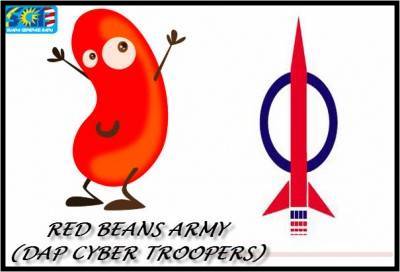
DAP has denied the existence of the Red Bean Army for years, even going as far as visiting the hotel which the RBA apparently used as a HQ… but of course you’d expect them to deny it.
So how did the Red Bean Army come about and, more importantly, are they still hiding in the shadows typing praises to Lim Kit Siang and causing purposefully sowing disharmony among Malaysians? Well, let’s start at the point where the Beans were sprouted.
To fight a political cyberwar, DAP (allegedly) formed the Red Bean Army

So here’s an idea of the media landscape in the early 2000’s: Opposition parties faced a disadvantage because most people were still dependent on traditional news sources like newspapers and TV, which were largely government-owned or party-controlled. But as more Malaysians gained access to the internet, opposition parties realized this was an unbridled space where they could reach out to the public without constraint. This digital strategy proved so effective that, after BN lost their two thirds majority in the 2008 GE, Abdullah Badawi admitted that BN “lost the internet war“.
So when Najib Razak said GE 13 would be “Malaysia’s first social media election“, it was the announcement of a political cyberwar that had already begun.
According to Utusan Malaysia, DAP formed the RBA to sow dissent online, spreading disinformation that undermined the government and national harmony. Malaysia Today later reported that RBA members also took their activities offline to their day jobs, with those working in banks purposefully rejecting loans from Bumiputra applicants while lecturers would scare Chinese students by telling them they won’t be employed in the civil service.
It’s insidious, malicious, and totally degenerate……. but that name so cute tho.
DAP (allegedly) named the RBA after Chairman Mao’s Communist soldiers
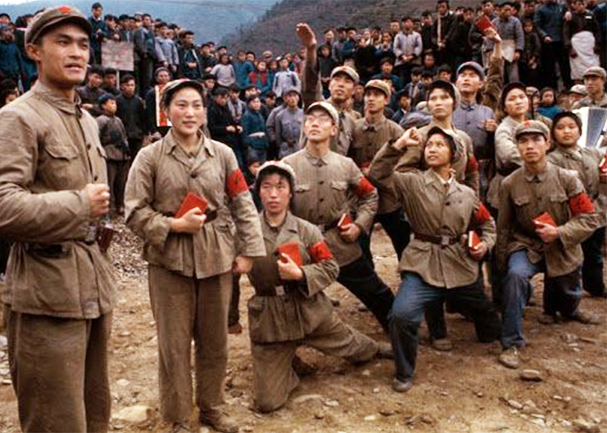
Okay, maybe not so cute anymore.
According to blogger Helen Ang, the Red Bean Army name came from the red berets worn by Mao’s Red Guards during the Cultural Revolution. Apparently, these guys were known as Red-Headed Soldiers/Army (红 头 兵) but DAP replaced the middle character with a similar-sounding word (红 豆 兵), resulting in Red Bean Army. However, this may be inaccurate because the Red Guard uniform hats we looked up were tan or green, and any searches for 红 头 兵 made references back to the Red Bean Army. The Red Guard connection was also mentioned in The Star, but omitted the relation to red berets.
But now, you might be wondering why DAP would want to use such a direct link to Communism though, especially when there are already long-standing accusations that they’re Communist sympathisers 🤷♂️?
The cracks in the RBA accusations start to show even more when you start looking into the details. For instance, no source can agree on how many RBA members there are, with Utusan saying it’s 200 people, Malaysia Today says it’s 800, while other sources claim the number to be 2,000. Similarly, DAP was supposed to have spent anywhere from RM108 million to RM1 billion funding the RBA between 2007 – 2013, again depending on which sources you find.
In fact, we didn’t even bother linking these sources because blogs and other publications seem to have reported on top of one another, and embellished the details along the way. But which was the patient zero article that brought the RBA into the public eye?
Actually, we’ve already given that answer away.
The first published mention of Red Bean Army came from Utusan Malaysia

As far as we could find, the first published mentions of DAP’s Red Bean Army came from Utusan Malaysia in May 2013, over a week after GE13. There doesn’t seem to be an online version of the report, but you can click on the image below to read it:
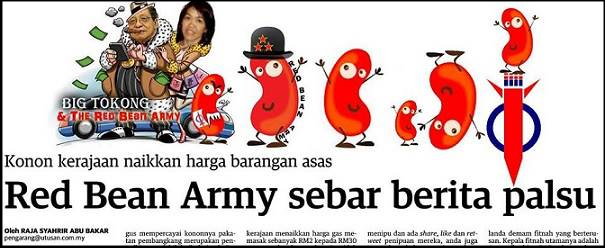
This is corroborated by Miaoling Ng, a media policy activist and former Media Strengthening Officer at the Centre for Independent Journalism (CIJ):
“There is no persuasive evidence as of yet to prove the existence of RBA. It was first uncovered by Utusan Malaysia, which was at that time owned by UMNO. Further, there was no other credible media organization conducting an independent investigation and corroborating the report.” – Miaoling, to Cilisos
Miaoling’s work focuses on the areas of online misinformation and disinformation, and tells us that there’s a 4-factor assessment anyone can use to determine the credibility of something they read online.

As an example, Miaoling used the Cambridge Analytica data scandal, where a whistleblower revealed how the company exploited personal data collected from millions of Facebook users without their consent to influence elections through targeted political advertising. Malaysia was also a client of Cambridge Analytica, with the company allegedly playing a role in helping BN win GE13, and the could have also played a role in GE14 had the scandal not been exposed. This, of course, was denied by BN.
But how is this accusation towards BN more credible than the RBA allegations towards DAP? Well, for Cambridge Analytica, you can see how the information is corroborated across the 4 factors (in blue):
- Credibility of the source – Story broken by The Guardian, with later investigations published by Channel 4 news, New York Times, and others
- Details of the information provided by the witness – Christopher Wylie (the whistleblower) had a dossier of evidence including emails, invoices, contracts, and bank transfers
- Credibility of the witness – Wylie was directly involved with harvesting the data
- Corroborating evidence(s) – Channel 4 news went undercover to record CA bosses, additional documents (including for Malaysia) leaked by another whistleblower
So, if you compare the Cambridge Analytica example with the RBA, you can come to the conclusion that…
OMG Cilisos and Miaoling are Red Bean Army!!!!
Yes, how do you know that DAP didn’t pay us some sweet, sweet Rocket Ringgits to mislead you?
We actually asked Miaoling this question, and here’s the screenshot of her reply:
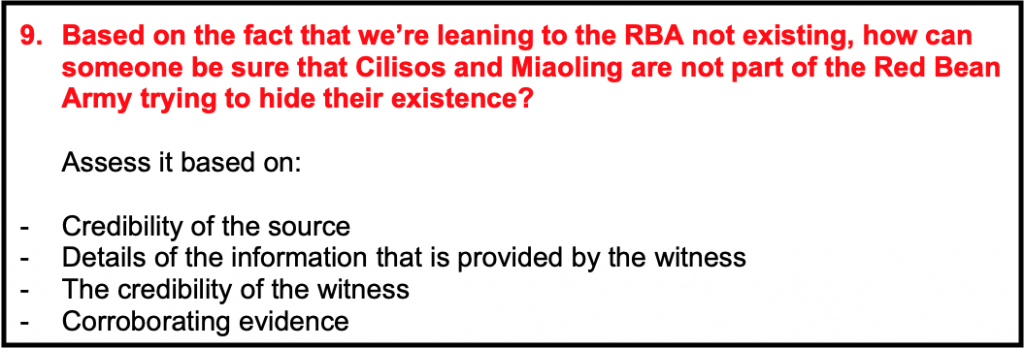
And here’s the main point of this article – regardless of whether it’s RBA or whatever latest political exposé is being shared in social media or forwarded on Whatsapp, you can now use the 4-factor assessment as a tool to avoid being a tool.
But just for the heck of it, we set out to find proof that the RBA existed. Here’s some of the more compelling pieces we found:
- A report from The Star (originally by China Press) citing the admin of the now-gone Zheng Yi Zhi Sheng Facebook Page saying that Red Bean Army was a title given to members of the Page. It was a platform to discuss political issues, and both admins denied all the allegations made in the Utusan report.
- According to The Third Force, George Soros provided the funding that made its way through a Singaporean stockbroker to “a group of youths” who helped Lim Kit Siang establish the RBA in 1999.
- A star report on the RBA contained an interview with Shen Yee Aun, the former executive secretary of DAP Youth who alleges that the RBA is, in fact, real and and he was one of their victims.
If you were to use Miaoling’s 4 factor test on each of these, you’d find that they’d be much harder to fill in, especially when it came to evidence. In fact, Shen himself says he doesn’t have a name list of RBA members but “insists that the proof of its existence is there on the internet”.
We also passed these links over to Miaoling, and her assessment (for The Third Force and Shen Yee Aun articles) is:
“These are bare statements without supporting evidences unfortunately. I can say that politicians are getting assistance from ET in Mars that is why BN won in 2008 and 2013 as well.” – Miaoling
The need to be extra aware of what you see on the internet, even if it’s just a badly-photoshopped picture of Lim Guan Eng in latex BDSM gear, is important because…
Cybertroopers are manipulating you without you even knowing
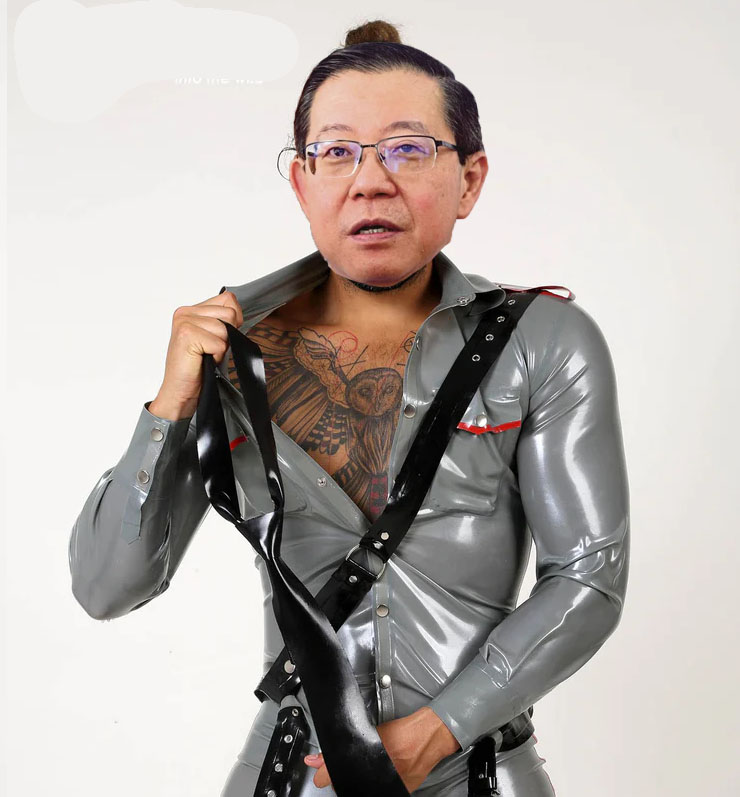
Just to be clear, we’re not saying that DAP cybertroopers don’t exist – we’re just saying the RBA as defined by Utusan and other blogs likely doesn’t exist. Every political party has their fair share of vocal hardliners online, some people enjoy being trolls, and some actually employ cybertroopers. In fact, we think we caught some in one of our polls earlier this year.
They all end up performing the same function, which is to divert genuine discussions and amplify biased or distorted information. So with that in mind, it doesn’t help trying to identify whether someone is a cybertrooper or not – in fact, that likely makes it worse for you. There’s an effect where your brain retains information but forgets where it came from, so you might end up remembering something as a real fact even though you initially knew it was fake.
“I think we should focus more on the content. There are [real people] who are disseminating real hate speech, so the harm originating from content is not contingent on whether this person is a cybertrooper. Cybertroopers are merely amplifiers.” – Miaoling
In essence, it comes down to the fact that you are the best judge of whether something is real or not, and that only comes with being aware of how you can be manipulated. If you want to know the right way to deal with cybertroopers, check out our illustrated guide here. Otherwise, run this article through the 4-factor assessment and let us know in the comments if you think we got a cut of those sweet, sweet Rocket Ringgits.
- 158Shares
- Facebook130
- Twitter7
- LinkedIn5
- Email4
- WhatsApp12

